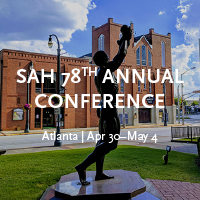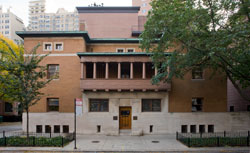-
Membership
Membership
Anyone with an interest in the history of the built environment is welcome to join the Society of Architectural Historians -
Conferences
Conferences
SAH Annual International Conferences bring members together for scholarly exchange and networking -
Publications
Publications
Through print and digital publications, SAH documents the history of the built environment and disseminates scholarshipLatest Issue:
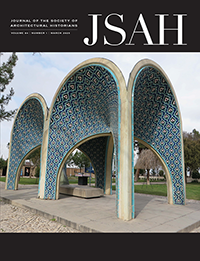
-
Programs
Programs
SAH promotes meaningful engagement with the history of the built environment through its programsMember Programs
-
Jobs & Opportunities
Jobs & Opportunities
SAH provides resources, fellowships, and grants to help further your career and professional life -
Support
Support
We invite you to support the educational mission of SAH by making a gift, becoming a member, or volunteering -
About
About
SAH promotes the study, interpretation, and conservation of the built environment worldwide for the benefit of all
Membership grants you access to exclusive resources and programs and provides support for new research and programs. Compare benefits across all our membership levels and choose the membership level that works for you.
Every Member Receives
- A yearlong subscription to the Journal of the Society of Architectural Historians (JSAH). Choose from digital access only or a combined print and digital subscription.
- On-demand access to the complete JSAH Archive (1941–present)
- Member rates for registration to SAH’s Annual International Conference
- AIA CES credits earned through conferences and study tours
- Eligibility to apply for SAH grants and fellowships
- Access to members-only lectures, virtual meetups, and more
- Connection to peers through 12 topic-focused SAH Affiliate Groups
- Access to more than 200,000 images of the built environment through the SAHARA database
- Access to SAH Commons online scholarly network
- Discount of 50% on JSTOR access with JPASS
- Eligibility to serve on the SAH Board or committees
- Subscription to the SAH Newsletter and Opportunities Weekly Roundup
Membership Levels
SAH Member
Our most popular membership tier offers optimized pricing to help everyone participate affordably in our community. Emerging scholars can apply for a one-year membership grant that helps bridge the gap between the Society's subsidized student memberships and full-cost SAH memberships.
| Rate | Description | Price: Digital | Price: Digital + Print |
| Individual | 12-month benefits for one person | $163 | $173 |
| Joint | 12-month benefits for two people (domestic partners). Each person receives a unique member ID and their own login to the member portal. | $233 | $243 |
| Retired/Emeritus | Discounted individual membership for former professionals on a fixed income | $98 | $108 |
| Reduced | Discounted individual membership for people working independently or at an institution without full-time employment. This includes adjunct and contingent faculty unemployed workers. | $98 | $108 |
| Student | Discounted individual membership for students currently enrolled in an undergraduate or graduate program in architectural history or related disciplines. | $60 | $70 |
| Professional Associate | Discounted individual memberships for groups of professionals working in the same museum, office, or firm. Ideal for architects, research or preservation groups, museum staff, and public design education. | $179 for first member + $103 for each additional member at the same institution | |
Upper-Level Member
Show your support for SAH’s mission by including a tax-deductible donation along with your Individual or Joint print + digital membership. Upper-level members receive all the benefits of a regular membership plus:
- Discount on registration for SAH Annual Conference, rates given below.
- Acknowledgement in four quarterly issues of JSAH, the annual report, and quarterly donor reports
- Membership to Frank Lloyd Wright National Reciprocal Sites Program, with which our headquarters, the Charnley-Persky House is affiliated.
- Early registration access for SAH Study and Excursion tours
| Tier | Donation | Price with Individual Membership | Price with Joint Membership | Discount on Annual Conference Registration |
| Cornerstone | $150 | $323 | $393 | 5% |
| Pillar | $350 | $523 | $593 | 7% |
| Keystone | $500 | $673 | $743 | 8% |
Life and Benefactor Member
Show your long-term commitment to SAH by becoming a Life member. Life members’ dues provide unrestricted funds to support the Society’s mission and continued opportunities for all members. Lock in your price and enjoy the most comprehensive suite of member benefits without the need to renew each year.
Life members receive these additional benefits:
- Acknowledgement in JSAH, annual report, and quarterly donor reports
- Membership to Frank Lloyd Wright National Reciprocal Sites Program, with which our headquarters, the Charnley-Persky House is affiliated.
- Early registration access for SAH Study and Excursion tours
- Specialty membership card
- Free tour of SAH's historic headquarters at the Charnley-Persky House in Chicago, IL
- One complimentary walking tour during SAH Annual Conference, reserved in advance, on a space-available basis.
- Free copy of an SAH Buildings of the United States book of your choice
Current Life Members can enhance their commitment to SAH by becoming a Benefactor through a $5,000 tax-deductible donation.
| Tier | Price | Donation Total |
| Life | $5,000 (one payment or four annual payments of $1,250) | None * |
| Benefactor | $10,000 | $5,000 |
* Life memberships are amortized over a period of 20 years and pay for annual benefits. There is no tax-deductible portion associated with Life membership.
President's Circle
SAH is immensely grateful to the many Life and Benefactor Members who continue to support the Society financially year after year. President’s Circle status recognizes the ongoing commitment these members show.
President’s Circle status is an annual distinction given to all Life and Benefactor members who make gifts to the Society of Architectural Historians totaling $1,000 or more during a given 12-month period. The status is applied to a donor as soon as they have achieved $1,000 in gifts within a single calendar year. The status is valid for 12 months from that date, and the date shall serve as an anniversary by which to renew their President's Circle status with one or more gifts totaling $1,000.
President's Circle members receive special benefits as thanks for their support:
- 10% discount on member-rate conference registration
- Recognition from the podium at SAH Celebrates annual gala
Limited-Access Affiliate
Affiliate membership permits an individual to participate in the activities of one or more SAH Affiliate Groups and the SAH Commons online scholarly network, without access to any other SAH benefits such as JSAH or discounted registration for conferences. Price is $25 per year.
Institutional Subscription
Institutional membership provides a subscription to JSAH and/or JSAH Online for communities of readers at public and academic libraries, museums, schools of architecture, architectural history departments, and other large institutions. Institutional subscribers receive the SAH Newsletter, qualify for discounted Career Center job ads, and member-rate registration for two library staff attending the SAH Annual International Conference.
The University of California Press handles institutional subscriptions on SAH's behalf. Visit the UC Press website to join or renew your Institutional subscription.
| Subscription Type | Price per Year | Additional Benefits |
|---|---|---|
| Digital Only | $693 | |
| Print + Digital - Domestic | $781 | |
| Print + Digital - International | $807 | |
| Sustaining | $881 |
|
Affiliate Groups
SAH Affiliate Groups are comprised of SAH members who share a common, narrowly defined interest, scholarly or otherwise. Participation in Affiliate Group activities is a benefit of SAH membership.
SAH Chapters
SAH has chapters located across the United States. Chapters are independently run organizations that are affiliated with SAH. SAH members can join chapters in their region.
Member Stories
Member Stories: Magdalena Miłosz
Jan 3, 2023
by
SAH News
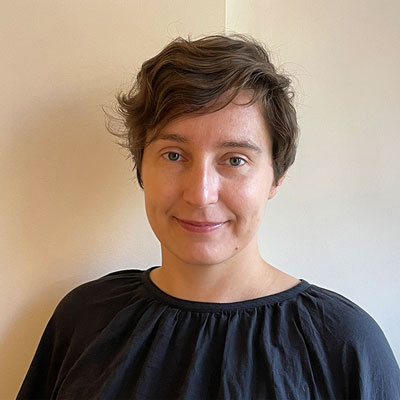
Magdalena Miłosz is a historian at Parks Canada. She lives in Kitchener, Ontario, Canada, and has been a member of SAH since 2017.
Tell us about your career path.
I grew up in Toronto and attended the undergraduate program in architectural studies at the University of Waterloo in Cambridge, Ontario. I enjoyed the emphasis on cultural history in the program: reading, writing, visiting buildings, watching films, and looking at works of art were respites from grueling days in the studio. The co-op program allowed me to get a sense for different forms of architectural practice, as well as trying out related fields like urban design and planning.
After graduation, I worked in the Toronto practice of Moffet & Duncan for a couple of years, focusing mostly on schools as well as getting involved in the business side through writing proposals. I returned to UW to complete a professional master’s, working with the late Andrew Levitt, Robert Jan van Pelt, and William Woodworth. I wanted to write a research-based thesis, eventually settling on the architectural history of residential schools as a topic, at the suggestion of John McMinn. As an immigrant to and settler in Canada, I had had the typical experience of learning next to nothing about Indigenous issues before going to university. The legacy of residential schools was gaining more public visibility at the time due to the struggle of survivors for acknowledgment of and compensation for their experiences in these institutions. I became really interested in the role of architecture in this history.
After I defended my thesis, I worked as an intern architect at a local firm, but found myself drawn back to the work I had started in graduate school. I began my PhD in architecture shortly thereafter, under the supervision of Annmarie Adams at McGill University in Montreal, with Ipek Türeli and David Fortin, now of the University of Waterloo, on my committee. Recently, I started working as an architectural historian with Parks Canada as I finish up my dissertation.
What projects are you currently working on?
My main project outside of work is, of course, my doctoral dissertation. It currently has the slightly too-long title, “‘They Have Decided What Houses Will Be Built’: Indigenous Peoples, Architecture, and the Settler-Colonial State, 1920–1970s.” I look at the built environment as a site of encounter between Indigenous Peoples and the Canadian government, particularly the role of architecture in materializing oppressive federal policies against Indigenous communities in the mid-twentieth century. I have recently wrapped up a few pieces of writing as I figure out how to balance employment, dissertating, and side passion projects (it’s hard—pick two). These include a book review of Cheryl Cowdy’s Canadian Suburban: Reimagining Space and Place in Postwar English Canadian Fiction on H-Net Environment and an entry on the Indians of Canada Pavilion at Expo 67 for Smarthistory. Since 2019, I have also served as a board member of the Society for the Study of Architecture in Canada and in this role have enjoyed working primarily in communications.
In my role at Parks Canada, I’m working on public history, heritage, and commemoration projects, specifically places nominated by the public for consideration as national historic sites, as well as federally owned heritage buildings. So far, I have been involved in projects touching on Indigenous and settler-colonial histories, the history of education, and the history of medicine, all through an architectural lens. I’m still quite new to this role, but so far I see it in many ways as both a continuation of my previous work as well as a sideways move outside of academia. I’m excited about everything I’ve learned so far, and I look forward to seeing where the work goes.
Do you have a particular memory of when you first became aware of the significance of architecture or when you knew you wanted to study it?
Like many architecture students, I was inspired to enter the field because I had a lot of interests and couldn’t quite settle on one side of the arts/science divide. And my high school guidance counsellor suggested it as a profession that might be a good fit! Aside from these somewhat clichéd experiences, I was really moved by the teaching of Robert Jan van Pelt in my first year of studies. As a Holocaust historian, Robert Jan had us thinking early on about difficult histories and their relationship to architecture. I can now see the impact of that in my academic interests.
What is your biggest professional challenge?
I’m currently learning a lot about neurodiversity and different ways of thinking, working, learning, and understanding the world. In particular, I am interested in how these differences manifest within work environments and are or are not allowed to be expressed. One of my biggest challenges has been trying to navigate educational and professional settings based on neurotypical standards and not understanding why I often felt like I was falling short. For example, as an architecture student I often found the studio to be an overstimulating and draining environment, something I couldn’t reconcile with the expectation to spend long hours there (the same was true for open-plan offices later on).
I want to acknowledge that lockdowns, and the pandemic in general, have been extremely difficult for many people in very different ways. For me, and I think for some others who gained the privilege of working from home during the last few years, there was an epiphany that there are alternatives to force-fitting oneself into neurotypical molds. Realizing and coming to terms with my neurodivergence is an ongoing process, and I am still learning how to talk about it. However, I wanted to put it out there in case it resonates for anyone else!
Another challenge, not unrelated, is the issue of moving outside of academia in the midst of or after completing a PhD. Coming from a professional, rather than academic, background, I wasn’t fully aware of what a PhD meant when I decided to pursue it, nor of the typical academic career path until I was well into my studies. While that path is right for some, I realized along the way that it wasn’t a good fit for me and began to explore alternatives. I think the PhD can be a great experience and have tremendous value for careers outside of academia proper, including university administration, government, heritage, the GLAM sector (galleries, libraries, archives, and museums)—and beyond. There are a lot of challenges along the way, but my sense is that this type of shift is becoming a much more common and even desirable option.
When and how did you become involved with SAH?
My first encounter with SAH was in 2018, when I attended the annual conference in Saint Paul, Minnesota, to present at the Graduate Student Lightning Talks. I really appreciated the other presenters’ ability to pare down super complex topics into engaging, yet succinct, five-minute talks—an essential skill with which I still sometimes struggle! That year, I was also a volunteer to get a feel for what happens behind the scenes of a major conference, as well as to take advantage of the reduced registration fee. I highly recommend this experience to students and anyone else interested in getting a bit more involved during conferences.
I learned a lot at the sessions that year and had a great time discovering the Twin Cities. In particular, I really enjoyed the tour of University Avenue, which took us between the downtowns of Saint Paul and Minneapolis on the Green Line LRT. Every few stops, we got off to look at some cool historic buildings, including several that had been adaptively reused or were being restored. It was a wonderful way to experience the urban history of the area.
How has SAH enriched your experience in architectural history?
Being involved with SAH has expanded my network of colleagues in architectural history, exposed me to new methods and ways of thinking about the field, and resulted in some great learning opportunities, such as helping to coordinate the SAH Annual Conference Student Diversity Fellowship in 2021–2022. I’ve also gotten to travel to conferences and experience directly the built environment in places I may not otherwise have visited.
Do you have a vision for how SAH should evolve in the future?
In the years since I joined SAH, I think the organization has made commendable strides towards becoming more diverse and inclusive. The IDEAS committee is doing fantastic work in this area, as are various affiliate groups. I think as someone from Canada, I am very much US-adjacent and not necessarily aware of the barriers to participation that scholars from other parts of the world may experience. I love the idea of a more global, multilingual SAH.
What advice would you give to someone who wants to enter your field?
Network. As a neurodivergent introvert, I used to dread the very idea of networking. But then I heard it explained this way: “It just means staying in touch.” (Apologies to the author of this fantastic reframing; your identity has slipped my mind, but your advice has stayed with me). Whether it’s waiting until after the conference to write a note to someone whose ideas intrigued you, picking up the thread of correspondence with an old colleague, being open to helping someone who asks, or seeking advice from a mentor, you will come out stronger when cultivating community in the ways that are available to you.
And stay open to possibilities. There are many ways to do architectural history, both in terms of methodology/approach and in the sense of a career path. Explore!
SAH members engage with the history of the built environment through a broad array of specializations, professional fields, and areas of interest. Member Stories is a regular feature that recognizes the expertise and unique experiences of our members.
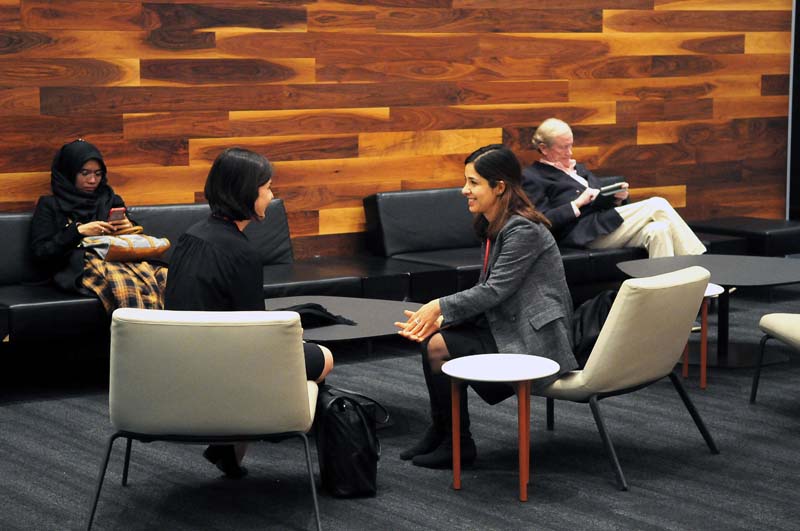
Membership Grants
Emerging scholars can apply for a one-year membership grant that helps bridge the gap between the Society's subsidized student memberships and full-cost SAH memberships.
